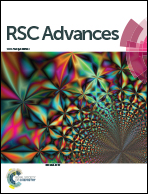Biologizing titanium alloy implant material with morphogenetically active polyphosphate
Abstract
As a further step towards a new generation of bone implant materials, we developed a procedure for biological functionalization of titanium alloy surfaces with inorganic calcium polyphosphate (Ca-polyP). This polymer has been demonstrated to exhibit morphogenetic activity. The coating of titanium oxidized Ti-6Al-4V scaffolds with biologically active amorphous Ca-polyP microparticles is formed by Ca2+ ion bridges to the silane coupling agent APTMS. This surface is durable and stable as an almost homogeneous Ca-polyP layer onto the metal. The homogenously coated Ca-polyP titanium scaffold was found to be biologically active and supported the growth and functional activity of bone cell-related SaOS-2 cells despite the reduced surface roughness, while the non-modified titanium surfaces are biologically inert. Quantitative qRT-PCR experiments revealed that the Ca-polyP coated titanium alloy markedly increased the steady-state levels of transcripts of the two marker enzymes involved in initiation of bone mineral deposition, the carbonic anhydrase IX and the alkaline phosphatase. The innovative coating of titanium alloy with Ca-polyP offers a promising technique for the fabrication of morphogenetically active bone implants with advantageous mechanical and regeneration-inducing properties.


 Please wait while we load your content...
Please wait while we load your content...